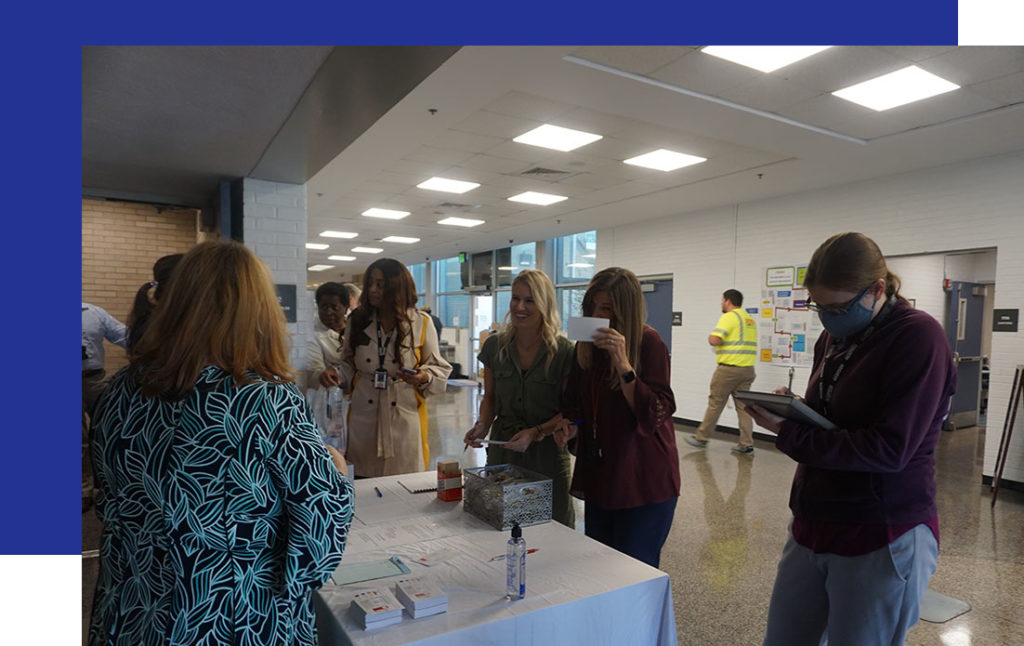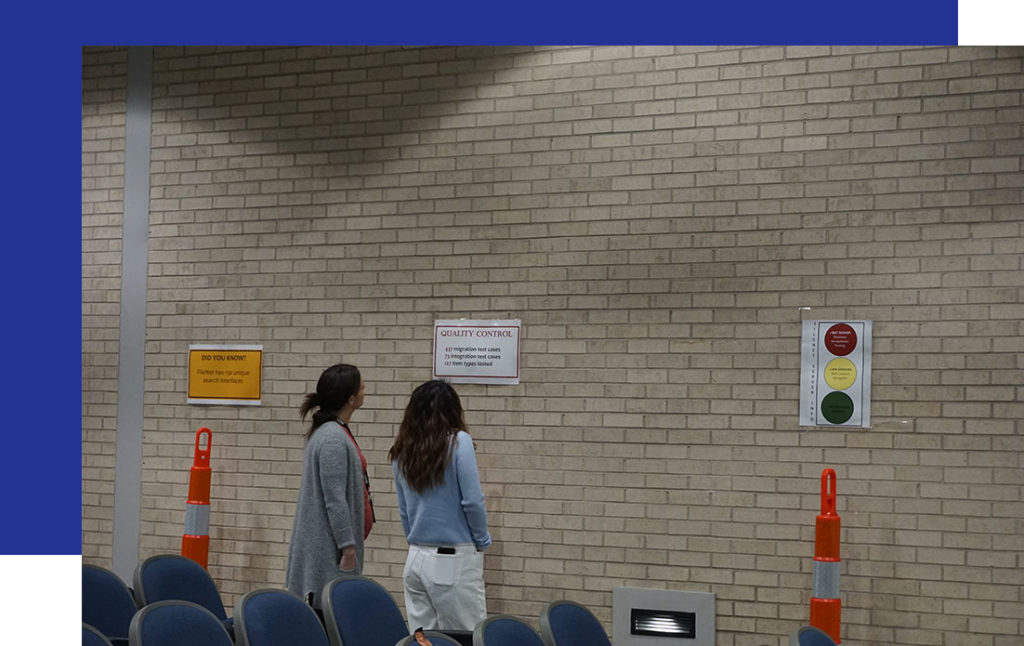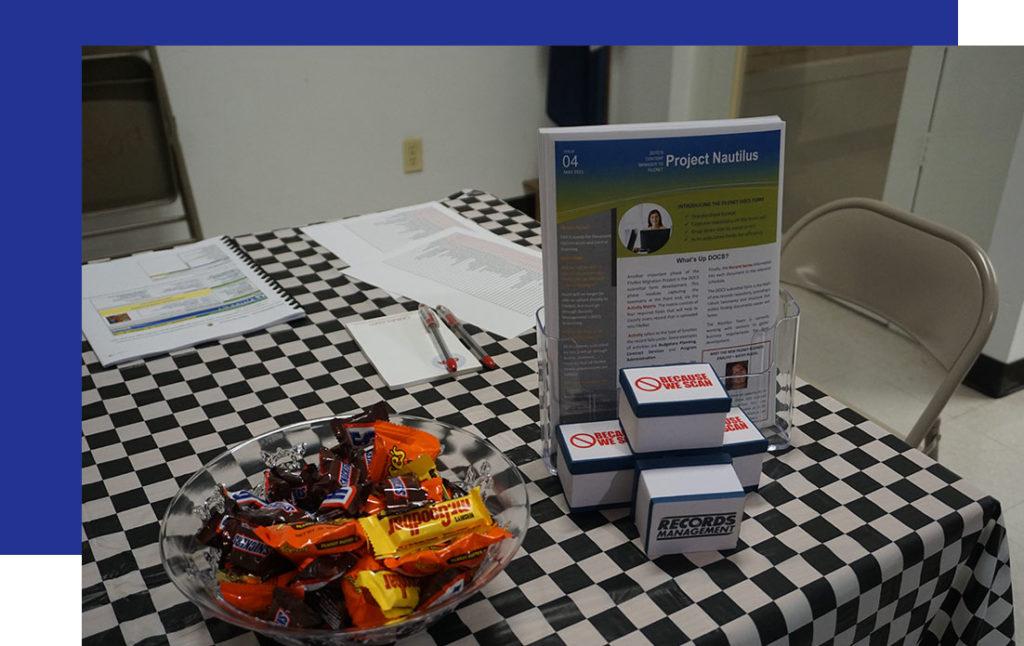27 Jan Nital Patel’s Guide to Creative Change Management
Back in 2015, Microsoft humbled us all when its study revealed that the average human attention span is eight seconds – one second less than a goldfish’s concentration capacity.
When you take that into consideration, it’s easy to see why organizational change is such a challenging objective. In a business setting, everyone’s dealing with their own set of responsibilities which makes it difficult to ask for their undivided attention.
So, instead of asking for their attention, capture their attention with creative change management. Here’s how with Nital Patel:
NITAL PATEL, CREATIVE CHANGE MANAGEMENT CONNOISSEUR
While Nital’s official title is Sr. Records Analyst for Access Sciences, her passion for creativity has led her to also guide clients’ change management efforts.
Rather than opt for the standard email communications and slideshow training sessions, Nital steps out of the box to incorporate fun ways of engagement for end-users. Because when people are genuinely interested in the change to come, it’s not such a battle to win over their attention.
“Change management is typically thought of as a final phase of a project, but it begins with the first step and continues until implementation. Each part of a project, whether it’s business analysis or training, sheds insight into how the change process can be framed.” – Nital Patel, Sr. Records Analyst for Access Sciences
TIP #1 FOR CREATIVE CHANGE MANAGEMENT: PREP BEFORE YOU COMMUNICATE
Before you can get creative with your change management tactics, you need to get creative with the messages you’re going to communicate – and that, of course, requires some prep.
Nital’s most recent change management project aided the Louisiana Department of Transportation and Development’s (LaDOTD) move from IBM Content Manager 8.5 to IBM FileNet. Rather than spitting out some mundane communications (we’re moving to IBM FileNet, this is why, this is how – hope you’re ready!), Nital and her team did a lot of prep to make sure their communications meant something to end-users.
She took a look at her audience, examining the different user groups to determine how the change would affect their roles. Then, her team sent out surveys and conducted interviews with each section of LaDOTD to dive deeper into how disruptive the change would be to their day-to-day processes, what the initial reactions to change might be, and what requirements need to be met.
Once you get a good feel for your organization’s cultural readiness for change, you can start crafting communications that resonate. Everyone wants to know, what’s in it for me? So, communicate that. How is this change going to save time, reduce costs, increase revenue, and/or minimize risk?
For Nital and her team, the big selling points were that IBM FileNet would have a much more intuitive, navigable environment and the search capabilities would far surpass the old system’s.
TIP #2 FOR CREATIVE CHANGE MANAGEMENT: PICK A THEME, MAKE IT CATCHY
Once you’ve identified the messages you want to communicate, it’s time to make them stick! Nital’s advice? Think like an advertising agency. Does a British lizard have anything to do with an American auto insurance company? Not really, but it works! The GEICO Gecko is fun, and he grabs people’s attention which is why he’s appeared in the company’s commercials since 1999.
Nital and her team made the IBM FileNet change campaign racecar themed, using catchy phrases and graphics to disseminate information. A generic project timeline flyer may not catch your attention when you’re walking into the office, but a large, colorful, poster-sized race roadmap could. An email invitation to the “IBM FileNet Training Session” may not entice you, but an invite to “Test Drive” the new system is more likely to spark some interest.

TIP #3 FOR CREATIVE CHANGE MANAGEMENT: ENGAGE END-USERS FROM THE START
While one-way communications are necessary to circulate important information, it shouldn’t be the only type of communication used in change management campaigns. Two-way communications and interactive activities are essential to engaging end-users, drawing them in by making them feel a part of the process.
Nital made sure to engage LaDOTD’s end-users from the very beginning of the project through the initial interviews. Even though the team was collecting information to help the project and prep their communications, they were also developing connections with end-users and gaining their feedback on the upcoming changes.
The feedback gathered made interactive, tailored training sessions possible later in the project’s journey. The team conducted training sessions according to each section’s preference – some were virtual, some were held in small groups of twelve people at a time, and some were held to accommodate larger groups.
Despite the type of training, all sessions were tailored specifically to each of the groups. The team created mock systems so that groups could walk through content search examples they would use in their own day-to-day operations.
The team also made all training sessions open to two-way communication. Participants were encouraged to ask questions and training leads remained open to all feedback.
From her experience, Nital knows it’s essential to gain end-user engagement – each person needs to feel heard and involved throughout the process to make the change adoption easier. At the end of the project, you want them to say, “We did this together.”
TIP #4 FOR CREATIVE CHANGE MANAGEMENT: BUILD HYPE AROUND THE CHANGE
When the new content management system neared its go-live date, Nital and her team made plans for an IBM FileNet Go-Live Kickoff Event to build hype around the change. When people have been hearing about and anticipating an upcoming change for quite some time, it makes sense to mark its launch in a memorable way.
Like the rest of the change campaign, the Go-Live Event was racecar themed, featuring the project team as the “Pit Crew,” the “Pit Stops” as designated areas to learn more about a FileNet topic, the “Fuel Packet” as a hand-out user guide, and the “Test Drive Station” as an area where users can get on a computer and try out the new system themselves.
If an attendee stopped by all three “Pit Stop” areas to fill out their “Fuel Card” (informational sheet), they were entered in several prize drawings.
Overall, the event was a success with more than 160 attendees participating on LaDOTD’s main campus, plus more tuning in remotely.



End-User Feedback
“I am so excited that I want FileNet on my computer ASAP!”
“I loved the training class. We are looking forward to the new features, including the ease of access with searches.”
If your team is struggling with making organizational changes stick, you’re not alone. Getting people to willingly change the way they work is a difficult feat. To do it right – to really capture end-users’ interest, you need to be creative.
Nital loves executing the change management portion of projects because it provides an opportunity to think outside of the box to develop a fun, engaging experience for end-users. With her tips and a creative brainstorming session, you can come up with your own unique, attention-grabbing change management campaign.
MORE INFORMATION
Stay tuned for Nital Patel’s podcast on Access Answers.



